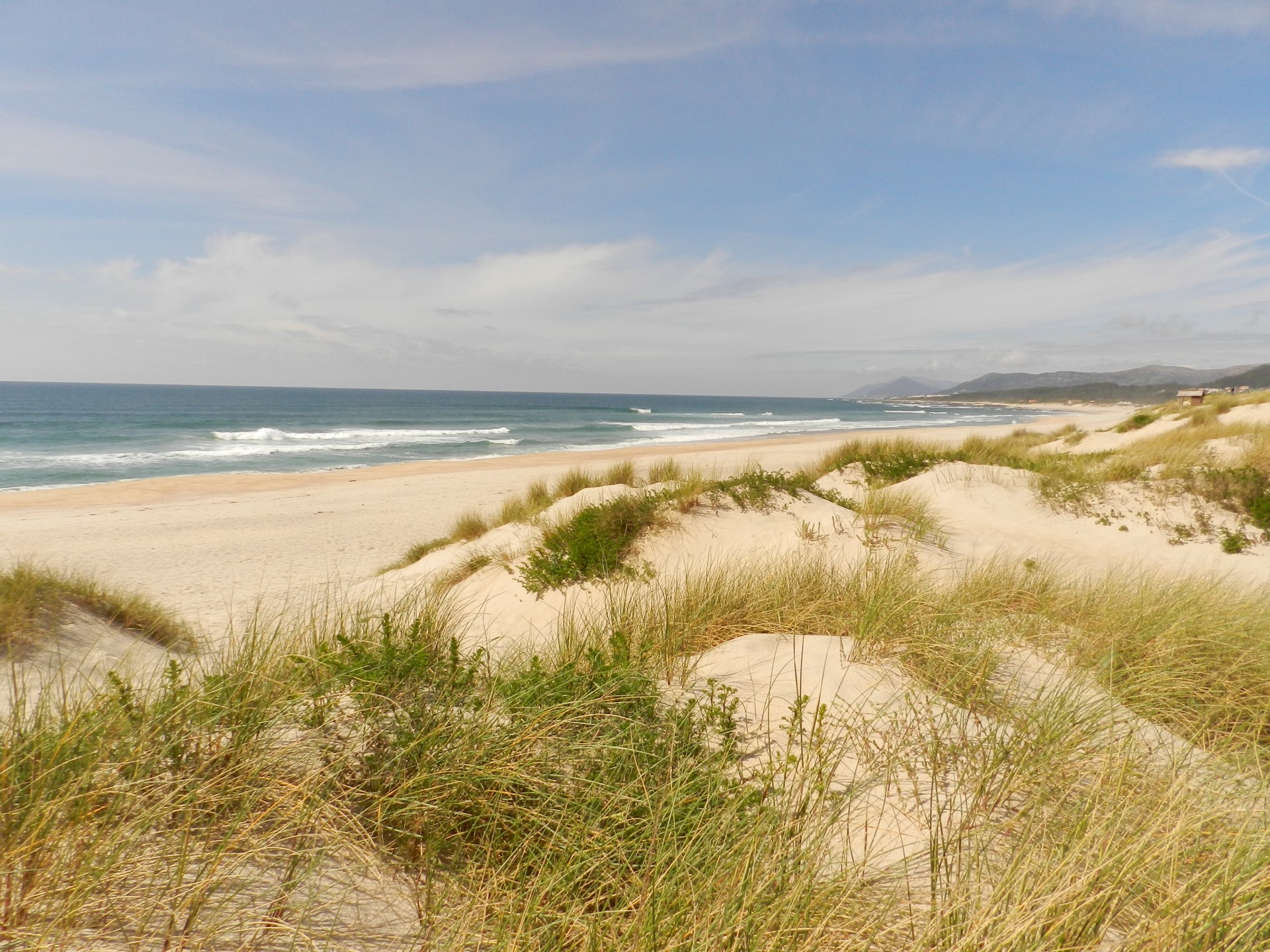Afife river mouth/Cabanas stream
Points of interest
Arda Dunes – Afife
Halophile /psammophile vegetation found on coastal sand dunes may be admired along most of this trail. The location of the dune dictates the type of vegetation found.
Pioneering species are able to resist the hostile environmental conditions of embryo dunes, more specifically possible inundation of seawater and being buried under sand. The pioneering species found just beyond the high-tide mark that colonize this area include: Elymus farctus (sea couch grass), Honckenya peliodas (sea dandwort), Cakile martitima (European sea rocket), Salsolakali (pricly saltwort) and Polygonum maritimum (knotgrass).
Next is the white dune stage, high groups of sand hills further inland bound together by Ammophilia arenaria subspecies arundinacea (marram grass), especially on the ridges where it accumulates and makes mounds. There is a substantial difference in the types of species found on the two sides of a dune. An abundant number of species may be found on the landward side of the slope, a more sheltered area. These include Medicago marina (coastal or sea medick), Silene nicaeensis (white campion – sticky catchfly), Otanthus maritimus (cotton weed plant), Eryngium maritimum (seaholly or seaside eryngo), Euphorbia parlias (sea spurge), and Pancratium maritimum (sea daffodil) (Faria, H., 2013).
On the secondary dune, also known as grey dunes, the reduced movement of sediments fosters the appearance of a greater number of species, namely Artemisia crithmifolia (beach wormwood), Crucianella marítima (maritime crossword), Malcomia littorea (silver sea stock), Calystegia soldanella (beach morning), Silene scabriflor (catchfly) and Linaria Caesia (toad flax).
The low-lying areas, such as the dune slacks which are damp and may be temporarily waterlogged, are specific habitats where species like the Juncus, sp (rushes) along with Salix repens (creeping willow) grow.
In the transitional area between the coastal sand dunes and fields, dense sandy patches are found. These are ancient dunes or fossils, most likely formed during the climate changes which occurred during the Holocene, namely the Medieval Warm Period and the Little Ice Age. Organic substance fertilized these sandy soils fostering the appearance of shrubs and trees.

